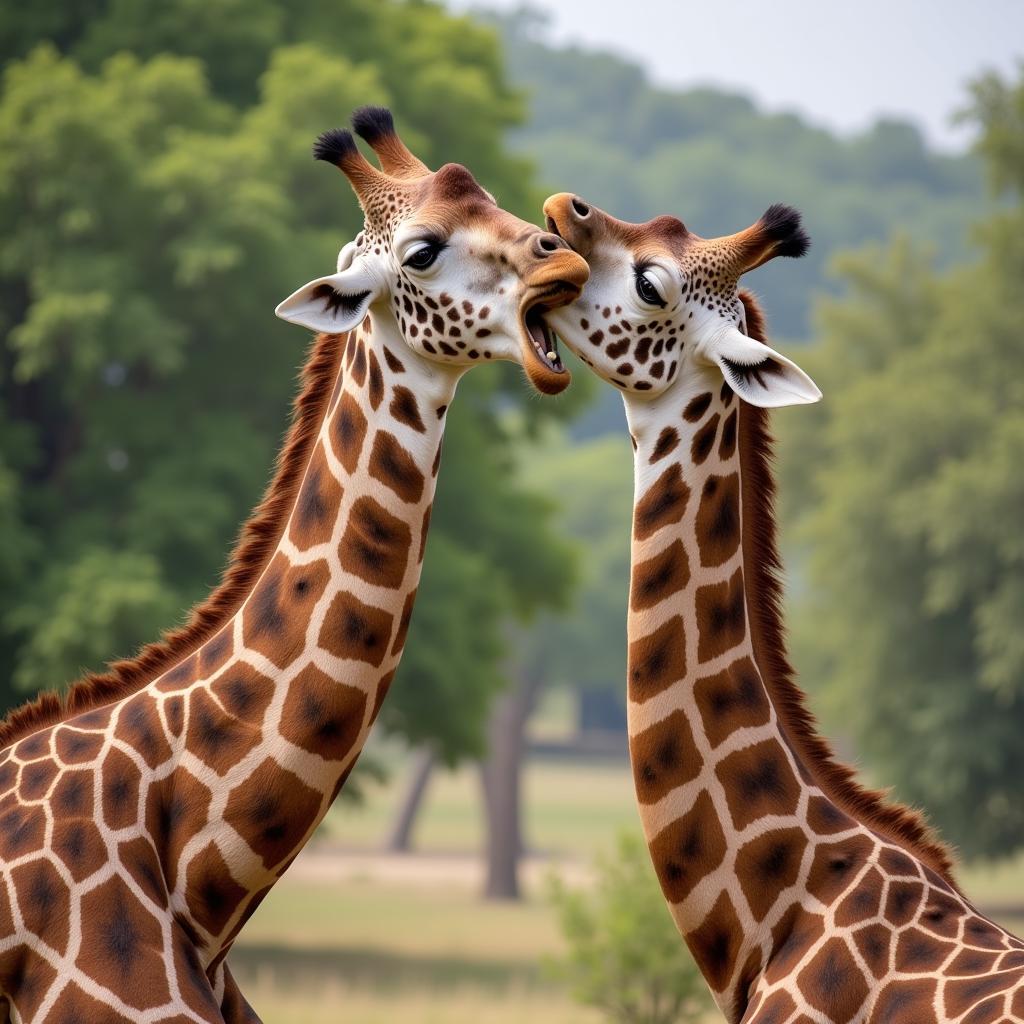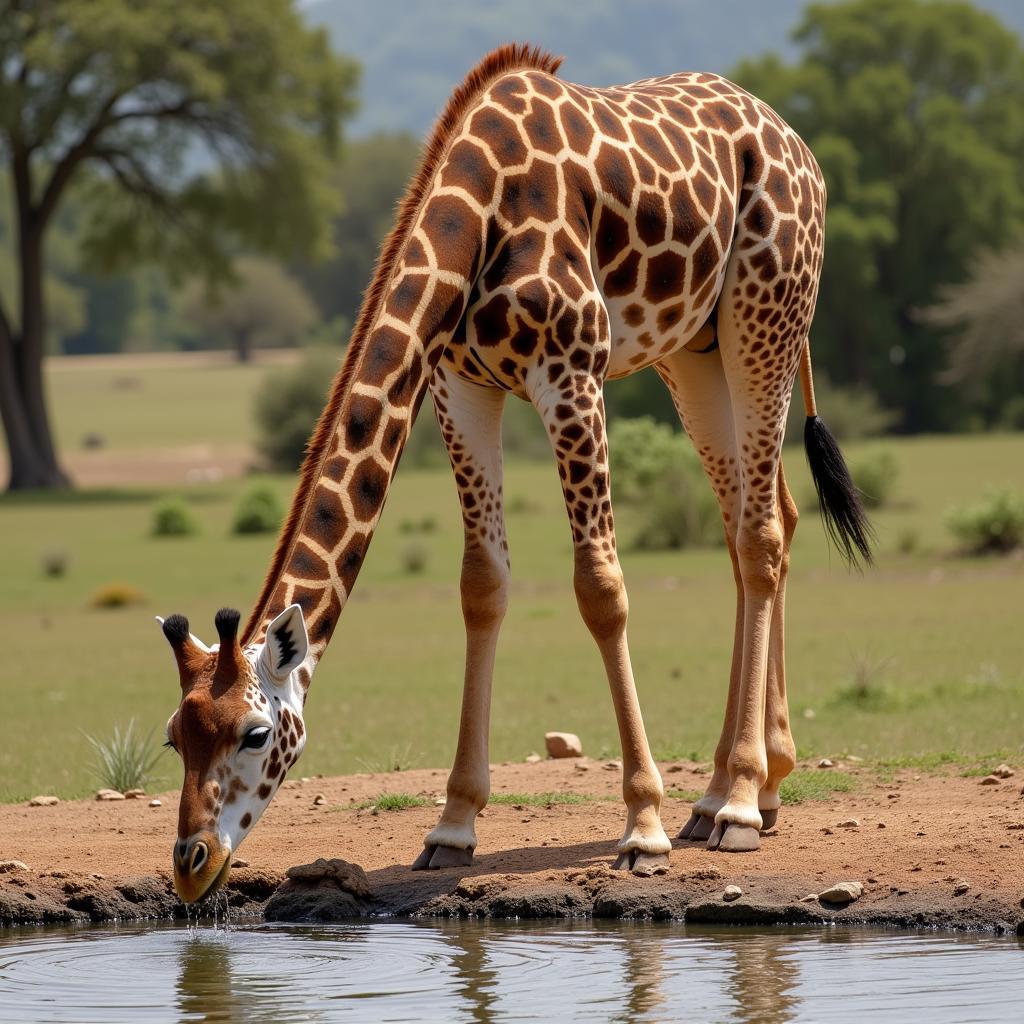The Towering Truth About African Giraffe Height
The African giraffe, an iconic symbol of the savanna, is renowned for its extraordinary height. But just how tall do these gentle giants grow?
Reaching for the Sky: Understanding African Giraffe Height
Giraffes are the tallest mammals on Earth, and their height is one of their most defining features. Their impressive stature is largely attributed to their disproportionately long necks and legs. While their body structure resembles that of other ungulates, their unique proportions set them apart in the animal kingdom.
Unraveling the Factors Influencing Giraffe Height
Several factors contribute to a giraffe’s impressive height:
- Genetics: Like humans, giraffes inherit their height potential from their parents. Genetic variations within giraffe populations can lead to a range of heights.
- Diet: A diet rich in acacia leaves, a primary food source, provides giraffes with essential nutrients for growth and development.
- Environment: Giraffes thrive in the African savannas, where open grasslands and scattered trees allow them to browse at towering heights. This environment has likely influenced their evolutionary trajectory.
- Sexual Selection: Male giraffes engage in “necking,” a form of combat where they use their necks and heads as weapons to establish dominance and win mating rights. This behavior may have played a role in the evolution of longer necks in males.
 African Giraffe Bulls Necking
African Giraffe Bulls Necking
How Tall is an African Giraffe, Really?
On average, adult male giraffes stand between 16 and 19 feet tall, while females are slightly shorter, reaching heights of 13 to 16 feet. To put that into perspective, the average double-decker bus is about 13 feet tall!
The tallest giraffe ever recorded was a male named George, who lived at Chester Zoo in England. At his peak, George towered over his enclosure at an astounding 19.1 feet tall.
A Look at Giraffe Growth and Development
Newborn giraffes enter the world with a dramatic entrance, literally falling several feet to the ground during birth. However, they’re quick to find their footing and can stand within an hour. These leggy youngsters can grow up to 3 centimeters per day during their first year of life.
The Advantages and Disadvantages of Being Tall
The giraffe’s remarkable height offers several advantages:
- Browsing Advantage: Their long necks grant them access to foliage high in trees, giving them a competitive edge over other herbivores.
- Predator Detection: Their height provides a vantage point for spotting predators from afar.
- Thermoregulation: Giraffes can regulate their body temperature by adjusting the amount of surface area exposed to the sun thanks to their long necks and legs.
 African Giraffe Drinking Water
African Giraffe Drinking Water
However, their height also presents challenges:
- Drinking Water: Reaching water sources can be awkward and require giraffes to spread their legs wide or kneel down, making them vulnerable to predators.
- Blood Circulation: Pumping blood all the way up their long necks requires a powerful heart and specialized circulatory systems.
A Closer Look at Giraffe Subspecies and Their Heights
While all giraffes share the characteristic of impressive height, there are subtle variations in height among the different subspecies:
- Masai Giraffe: Known for their jagged spot patterns, Masai giraffes are generally the tallest subspecies.
- Reticulated Giraffe: Recognizable by their bold, net-like patterns, reticulated giraffes are slightly shorter than their Masai counterparts.
- Southern Giraffe: The tallest giraffe ever recorded was a southern giraffe named George.
FAQs:
Q: How do giraffes sleep given their long necks?
A: Giraffes typically sleep standing up, but they may also rest by folding their legs beneath them and resting their heads on their rumps.
Q: Are giraffes social animals?
A: Giraffes are not as overtly social as some other animals, but they do form loose herds and interact with each other.
Q: What is the lifespan of a giraffe?
A: In the wild, giraffes can live for 20 to 30 years.
Q: What are the main threats to giraffes?
A: Habitat loss, poaching, and human-wildlife conflict are major threats to giraffe populations.
Discover More About These Gentle Giants
The African giraffe’s towering height is a testament to the power of evolution and adaptation. To delve deeper into the fascinating world of these gentle giants, explore more articles on our website:
- Learn about the diverse range of animals found in Africa: african animals list a to z
- Discover the intricate beauty of african grassland shrubs thorny
- Explore the rich tapestry of african includes
Contact us at +255768904061 or kaka.mag@gmail.com, or visit us in Mbarali DC Mawindi, Kangaga, Tanzania. Our dedicated team is available 24/7 to assist you.